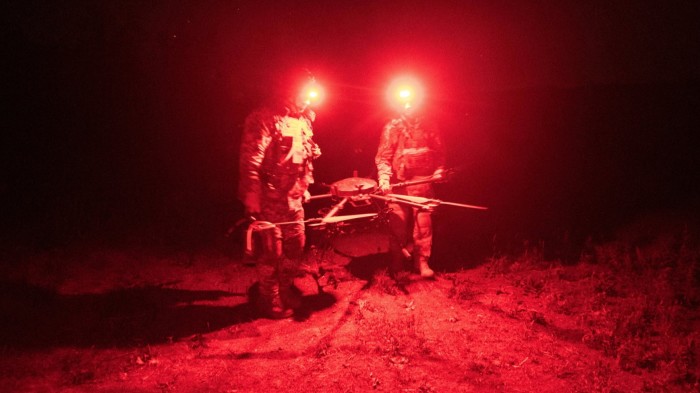Unlock the Editor’s Digest for free
Roula Khalaf, Editor of the FT, selects her favourite stories in this weekly newsletter.
“If Europe wants to avoid war, Europe must get ready for war,” Ursula von der Leyen, the European Commission president, said in March. Most European countries have finally confronted the need to spend big on rearmament, and started to mobilise the financing. Now they need to spend the money wisely. They must avoid the trap of preparing to fight the last war, and instead leapfrog ahead in developing the technologies needed to fight, or hopefully deter, the next one.
The last time European governments had to think seriously about conflict was in the cold war. The danger is that old instincts kick in: thinking in terms of sheer numbers of weapons systems such as tanks and artillery, fighters and warships. The Ukraine war has shown the age of tanks and artillery is not over. But that conflict has also become a laboratory for innovative technology, and how it can enhance and surpass more traditional weaponry. Above all, the first “drone war” has demonstrated that the key capabilities of the future are unmanned weapons systems, electronic warfare and military artificial intelligence.
Drones — in the air, on land and underwater — are now among the most effective weapons. The Royal United Services Institute, a UK think-tank, estimates that they account for roughly two-thirds of damaged and destroyed Russian systems in Ukraine. They have enabled Kyiv’s forces, massively outgunned and outmanned by Russia, to resist full-scale invasion for more than three years and launch effective attacks on their adversary. Cheap drones costing $300 can knock out multimillion-dollar tanks; naval drones have driven the Russian fleet out of much of the Black Sea. Used adroitly and at scale, they can give defensive forces an asymmetric advantage. They can also be used for surveillance and logistical support.
That has lessons for procurement. Western militaries have to switch more defence spending from traditional hardware to drones and software, and from established “primes” — such as Lockheed Martin, Boeing, Thales and Rheinmetall — to more nimble start-ups such as Anduril and Helsing. But the Ukrainians, and the Russians, have proved adept at building drones even more cheaply, and adapting them more quickly, than western start-ups. So, learning from Ukraine, European countries need to build a flexible ecosystem of defence innovation, including finding ways to adapt cheaper consumer technologies and software.
Military procurement often followed a top-down model of armies and governments identifying the need for certain capabilities, then commissioning suppliers to develop it. Modern defence requires suppliers with bigger research budgets, constantly testing new ideas to find ones that work. Since China still dominates the supply of commercial drones and components, Nato members must also localise production of batteries, propellers and other parts.
Command and control hierarchies also need to be restructured to use drones and electronic warfare more effectively. That means creating mechanisms to pass feedback from frontline forces rapidly up to military command and suppliers, which then quickly respond; Ukraine created its Unmanned Systems Forces to do just that. Russian forces are adept at electronic warfare, and jamming drones. That demands constant adaptation, such as using unhackable fibre optic cables to direct drones. The next iteration — AI-guided weapons using optical navigation that rely less on GPS and direct communication — is already being developed.
The technological edge Nato countries established over numerically larger Soviet forces helped to end the cold war without ever having to fight it. The aim, using technology in even more creative and nimble ways and relying much less on the US, must be to do something similar this time.


